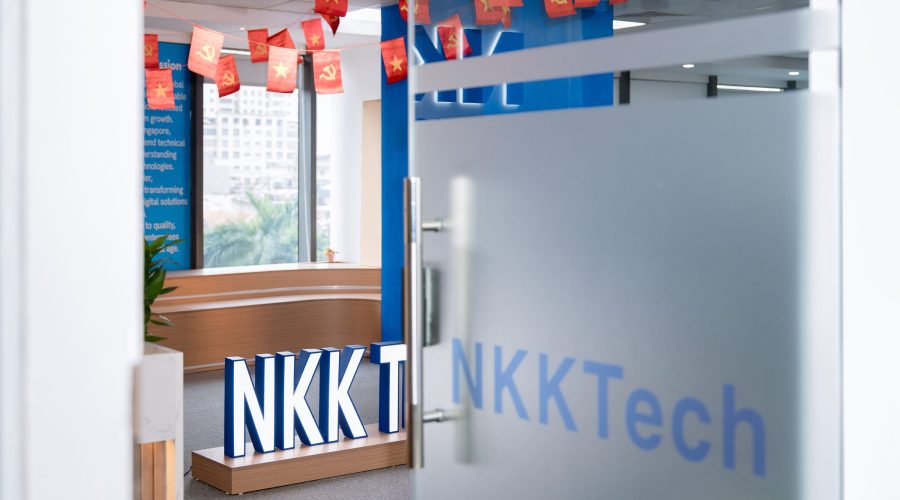Navigating the World of Software Outsourcing: Your Ultimate Comparison Guide
In today’s fast-paced digital landscape, businesses are constantly seeking innovative ways to enhance their operations, reduce costs, and gain a competitive edge. One strategy that has gained immense traction is software outsourcing. This approach allows companies to delegate their software development tasks to external third-party vendors, often located in different geographical regions. While the concept offers significant advantages, understanding the nuances of different models and how to select the right partner is crucial for success. This comprehensive guide aims to demystify software outsourcing, providing a thorough comparison of its various facets to help you make informed decisions for your next project.
Table of Contents
- 1. What is Software Outsourcing?
- 2. Benefits and Challenges of Software Outsourcing
- 3. Different Software Outsourcing Models Explained
- 4. Key Factors for Choosing a Software Outsourcing Partner
- 5. Best Practices for Successful Software Outsourcing
What is Software Outsourcing?
Software outsourcing refers to the practice of contracting out software development work to a third-party company or individual outside of your organization. This can encompass a wide range of services, including custom software development, mobile app development, web development, IT consulting, maintenance, and support. The primary motivation behind engaging in software outsourcing is often to leverage specialized skills, optimize operational costs, and accelerate project timelines. By outsourcing, companies can tap into a global talent pool, accessing expertise that might not be readily available in-house or would be prohibitively expensive to hire locally.
Historically, outsourcing began as a cost-saving measure, particularly for non-core business functions. However, it has evolved significantly, now being viewed as a strategic tool for growth and innovation. Many businesses use software outsourcing to scale their operations quickly, allowing them to take on more projects or expand into new markets without the burden of extensive recruitment and infrastructure investment. Whether it is staff augmentation, where external developers join your in-house team, or project-based outsourcing, where the vendor takes full responsibility for an entire project, the flexibility offered by these models makes them attractive to businesses of all sizes seeking efficient and cost-effective software development solutions. Understanding these underlying mechanisms is the first step towards successful implementation.
Benefits and Challenges of Software Outsourcing
The decision to engage in software outsourcing comes with a distinct set of advantages and potential pitfalls. On the benefits side, one of the most compelling factors is significant cost reduction. Outsourcing to regions with lower labor costs can drastically cut development expenses, allowing companies to allocate resources more strategically. Beyond cost, access to a diverse pool of global talent is a major draw. Businesses can find specialized skills and expertise for niche technologies that are scarce or expensive in their local markets. This capability enhances project quality and innovation, ensuring that complex requirements are met by highly competent professionals. Furthermore, outsourcing frees up internal resources, allowing your core team to focus on strategic initiatives and core business functions, thereby increasing overall organizational efficiency and productivity. It also enables faster project completion and market entry, leveraging the vendor’s existing infrastructure and streamlined processes. These considerable outsourcing benefits make it an attractive option for many forward-thinking businesses.
However, it is equally important to acknowledge the potential risks of outsourcing. Communication can be a significant hurdle, especially when dealing with time zone differences, language barriers, and cultural nuances. Misunderstandings can lead to delays, rework, and ultimately, project failure. Data security and intellectual property protection are paramount concerns; companies must ensure robust contracts and security protocols are in place to safeguard sensitive information. Moreover, a lack of direct control over the outsourced team can sometimes lead to quality control issues or a misalignment with the company’s vision and values. Managing these challenges effectively requires proactive planning, clear communication channels, and a strong partnership built on trust and transparency. Proper due diligence when selecting software development vendors is non-negotiable to mitigate these challenges and maximize the chances of a successful outcome.
Different Software Outsourcing Models Explained
When considering software outsourcing, it is vital to understand the various engagement models available, as each offers distinct advantages and disadvantages tailored to different business needs. The three primary outsourcing models are offshore, nearshore, and onshore. Offshore development involves partnering with a vendor located in a geographically distant country, such as engaging a team in Vietnam or India from a North American or European base. The primary advantage of offshore development is often the significantly lower labor costs, making it the most budget-friendly option. However, it typically comes with challenges related to large time zone differences, potential communication barriers due to language and cultural variations, and less frequent in-person meetings. Despite these hurdles, the cost savings and access to vast talent pools make it a popular choice for large-scale projects or companies with limited budgets seeking extensive software outsourcing solutions.
Nearshore outsourcing involves collaborating with a vendor in a neighboring country or one within a similar time zone. For instance, a U.S. company might outsource to Mexico or Canada, while a Western European company might look to Eastern European nations. This model strikes a balance between cost-effectiveness and operational convenience. The time zone differences are minimal, facilitating real-time communication and collaborative work. Cultural similarities also tend to reduce misunderstandings, making project management smoother. While typically more expensive than offshore options, nearshore provides a good middle-ground, offering a blend of cost savings and improved collaboration. Lastly, onshore outsourcing, also known as local outsourcing, means engaging a vendor within the same country or region. This model offers the highest level of communication ease, cultural alignment, and often the ability for frequent face-to-face meetings. The primary drawback is the higher cost, which is comparable to, or sometimes even exceeding, in-house development. Businesses usually opt for onshore outsourcing when proximity, immediate communication, and strict regulatory compliance are paramount, making it suitable for highly sensitive or complex projects where close collaboration is essential. Each of these outsourcing models presents a unique proposition, and the best choice depends entirely on your project’s specific requirements, budget, and risk tolerance.
Key Factors for Choosing a Software Outsourcing Partner
Selecting the right software outsourcing partner is perhaps the most critical step towards a successful project. It extends beyond merely comparing price quotes; it involves a thorough evaluation of several key factors to ensure alignment with your business objectives and project requirements. Firstly, assess their experience and portfolio. A reputable vendor should have a proven track record of delivering successful projects similar to yours, demonstrated through case studies, client testimonials, and a strong portfolio. Look for experience in your industry or with your specific technology stack. Secondly, communication infrastructure and practices are paramount. Evaluate their communication channels, response times, and their ability to bridge language and cultural gaps. Clear and consistent communication is the cornerstone of effective remote collaboration, particularly in complex software development outsourcing. Thirdly, thoroughly vet their technical expertise and development methodologies. Do they use agile development, DevOps, or other modern practices? Are their developers proficient in the programming languages and frameworks relevant to your project? Ensuring their technical capabilities match your needs is essential for quality delivery. This due diligence is vital when choosing an outsourcing partner.
Moreover, consider their security protocols and intellectual property (IP) protection measures. In today’s digital age, safeguarding sensitive data and proprietary information is non-negotiable. Ensure they have robust security frameworks, sign non-disclosure agreements (NDAs), and adhere to international data protection standards. Fourthly, transparency in pricing models is crucial. Understand how they structure their fees (fixed-price, time & material, dedicated team) and ensure there are no hidden costs. A transparent pricing structure builds trust and avoids disputes later on. Finally, evaluate their post-development support and maintenance services. A good partner will offer ongoing support to ensure the software remains functional, secure, and up-to-date. By meticulously evaluating these factors, you can significantly enhance your chances of forging a long-term, successful partnership in software outsourcing, leading to higher quality outputs and greater return on investment. This diligent approach helps in mitigating the common risks of outsourcing.
Best Practices for Successful Software Outsourcing
Achieving success in software outsourcing requires more than just selecting a capable vendor; it demands a strategic and proactive approach throughout the project lifecycle. One of the foremost best practices is to define clear and comprehensive project requirements from the outset. Ambiguity in scope, functionalities, and expectations can lead to misunderstandings, delays, and cost overruns. Develop detailed documentation, including functional specifications, wireframes, and user stories, to ensure both parties have a shared understanding of the deliverables. Regular and transparent communication is another non-negotiable element. Establish consistent communication channels, schedule regular meetings (daily stand-ups, weekly reviews), and utilize collaboration tools to bridge geographical distances. Prompt feedback and open dialogue can prevent minor issues from escalating into major problems. This proactive communication is especially vital for offshore development engagements, where time zones can create challenges. Adopting agile methodologies can also significantly enhance collaboration and adaptability, as it encourages iterative development and continuous feedback, allowing for flexibility as requirements evolve. This iterative process helps in managing the complexities often associated with software development outsourcing.
Furthermore, establish a robust contract that clearly outlines deliverables, timelines, payment terms, intellectual property rights, confidentiality clauses, and dispute resolution mechanisms. A well-defined legal agreement protects both parties and sets clear expectations. Regularly monitor progress and performance, using key performance indicators (KPIs) to track milestones, quality, and adherence to budget. Implement a structured review process to provide constructive feedback and ensure the project remains on track. It’s also beneficial to foster a collaborative environment, viewing your outsourced team not just as vendors but as an extension of your own team. Building a strong relationship based on trust and mutual respect can lead to better outcomes and long-term partnerships. By adhering to these best practices, businesses can overcome common risks of outsourcing and unlock the full potential of software outsourcing, transforming it into a powerful engine for innovation and growth. For any further questions or to discuss your specific software outsourcing needs, feel free to reach out to us at contact@nkk.com.vn.




